Born in Amsterdam, Kingdom of the Netherlands, in 1815, as a young boy Krieghoff was taught art by his father. Around 1830, Krieghoff moved to Germany to study at the Academy of Fine Arts and later moved to the United States in 1836. One year after moving to the U.S., he enlisted in the First Regiment of Artillery in the United States Army. During his time as a soldier, he sketched scenes of the Second Seminole War, and also met his future wife, Émilie Gauthier. In 1840, he was discharged from the army and relocated to Canada with his wife, settling in Montreal.
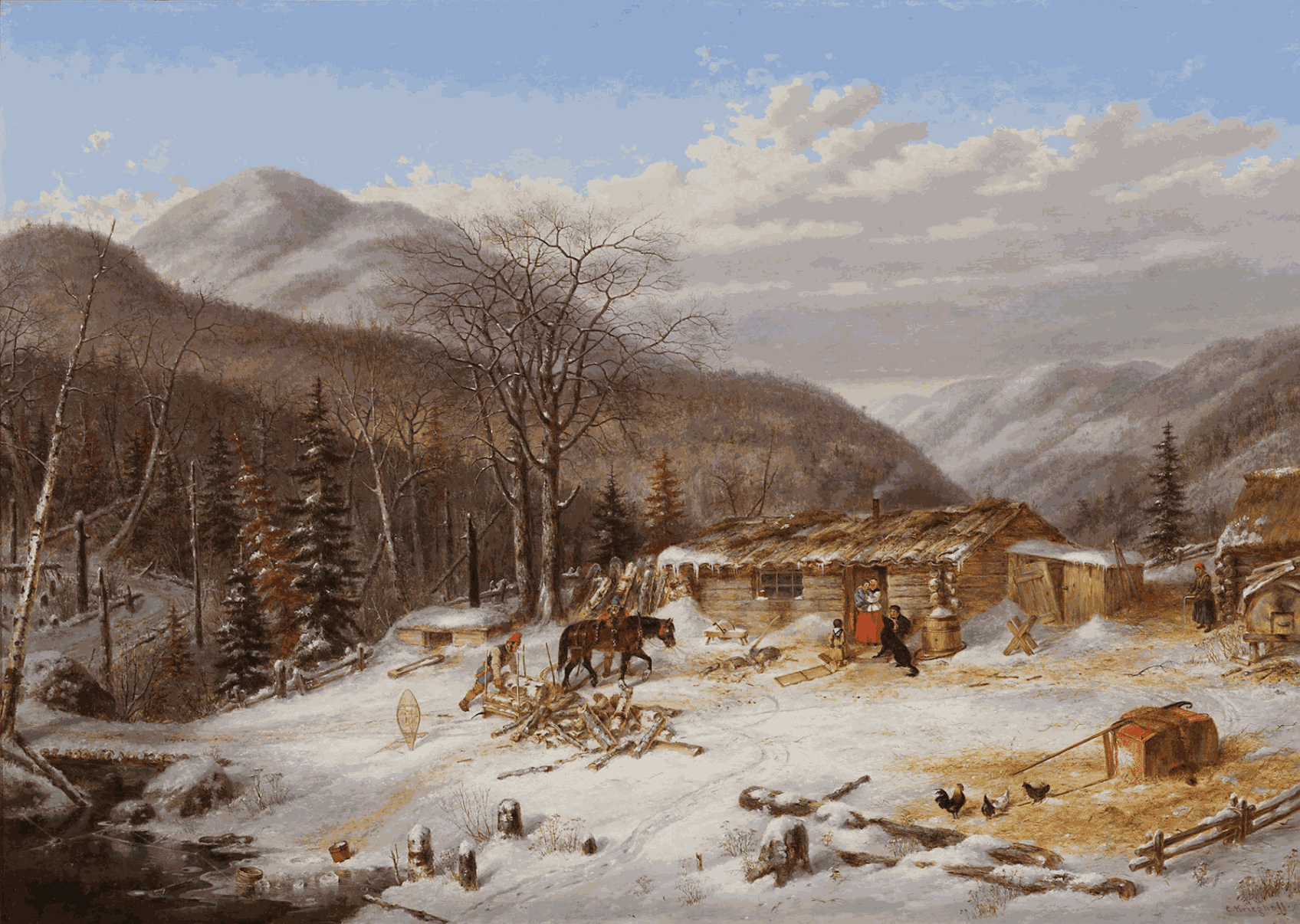
The First Snow / Canadian Homestead, c 1856 by Cornelius Krieghoff
Four years later, he travelled to Paris, France, where he studied under Michel Martin Drolling, a neoclassical French painter. During his two years in France, he was taught how to copy masterpieces at the Louvre.

The Habitant Farm, 1856 by Cornelius Krieghoff. National Gallery of Canada.
Krieghoff returned to Montreal and lived there between 1846-1853, where he developed a connection with the Mohawk community at the Kahnawake reserve, creating numerous sketches that he used as the basis for oil paintings. He painted men heading out to hunt, women traveling to market, often on snowshoes, and people dressed in toques and blanket coats, sometimes pulling toboggans. He also created summer scenes that featured campfires, birchbark canoes along the shoreline, cooking kettles, wigwams, and dogs, all set against forested backdrops. Krieghoff faced significant financial hardship in Montreal. His genre scenes of French-Canadian life did not appeal to wealthy urbanites, and he often went door-to-door offering paintings for $5–10. To make ends meet, he sometimes worked as a housepainter. In 1851, he met John Budden, an auctioneer who begins buying and promoting Krieghoff’s work.
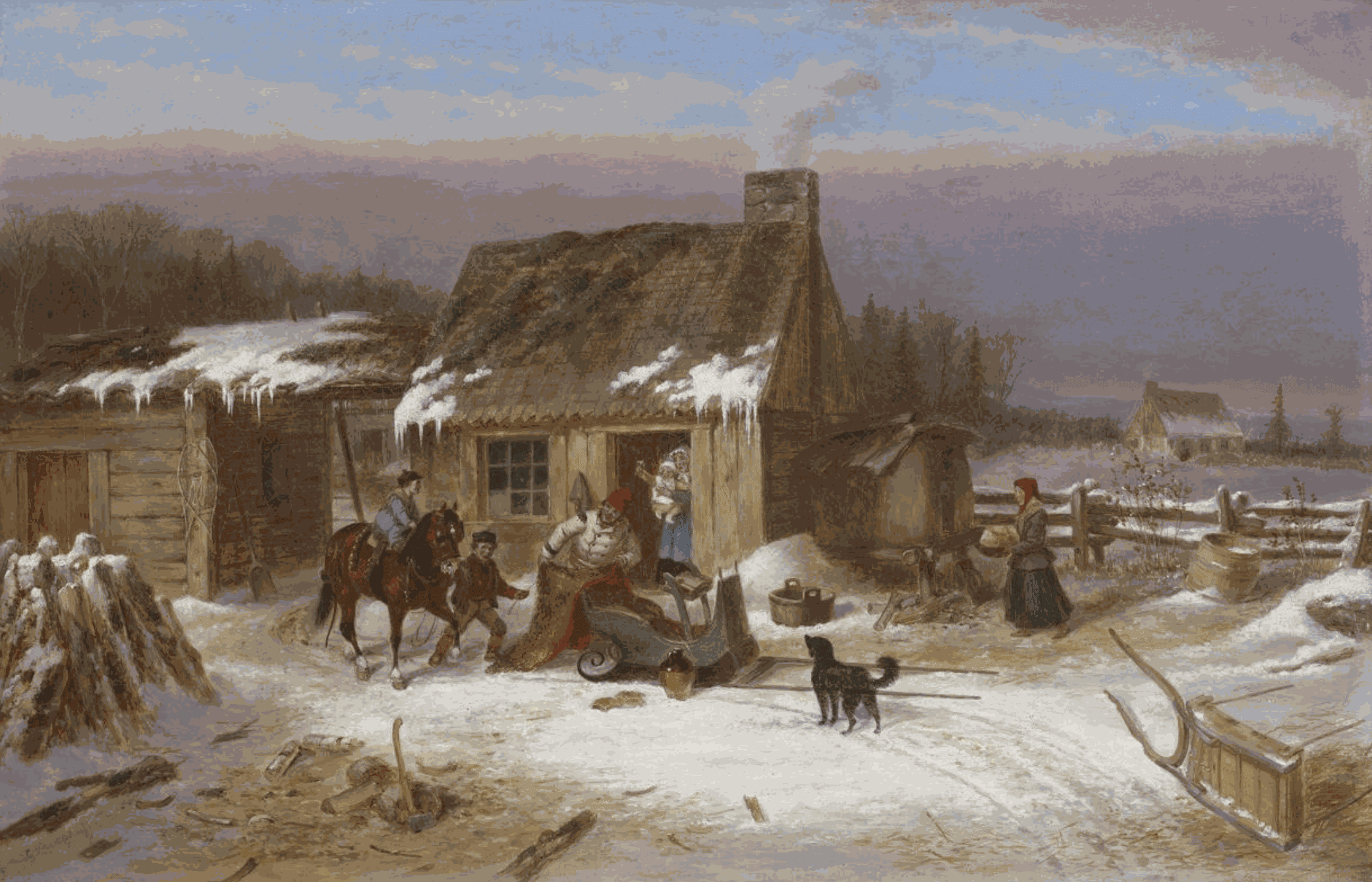
A Trip to Town, 1865 by Cornelius Krieghoff
He gained success and popularity only after moving to Quebec City in 1853, thanks to his friend and patron John Budden. Here, he became financially stable, well-known, and even hosted Governor General Lord Elgin. This marked the beginning of Krieghoff's most productive and prosperous decade.
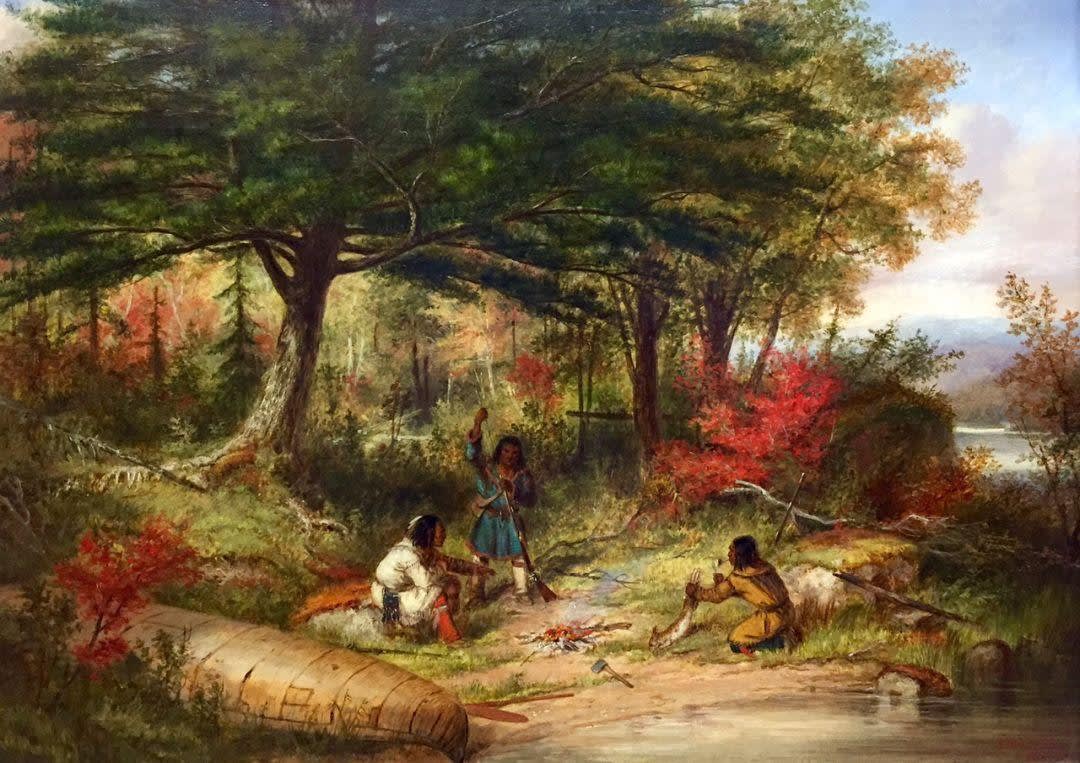
Autumn, Indian Camp, 1860 by Cornelius Krieghoff
His body of work included iconic images of Indigenous peoples and habitants, showcasing specific traits and activities that represented their social and regional identities, along with scenes depicting community celebrations and winter events.
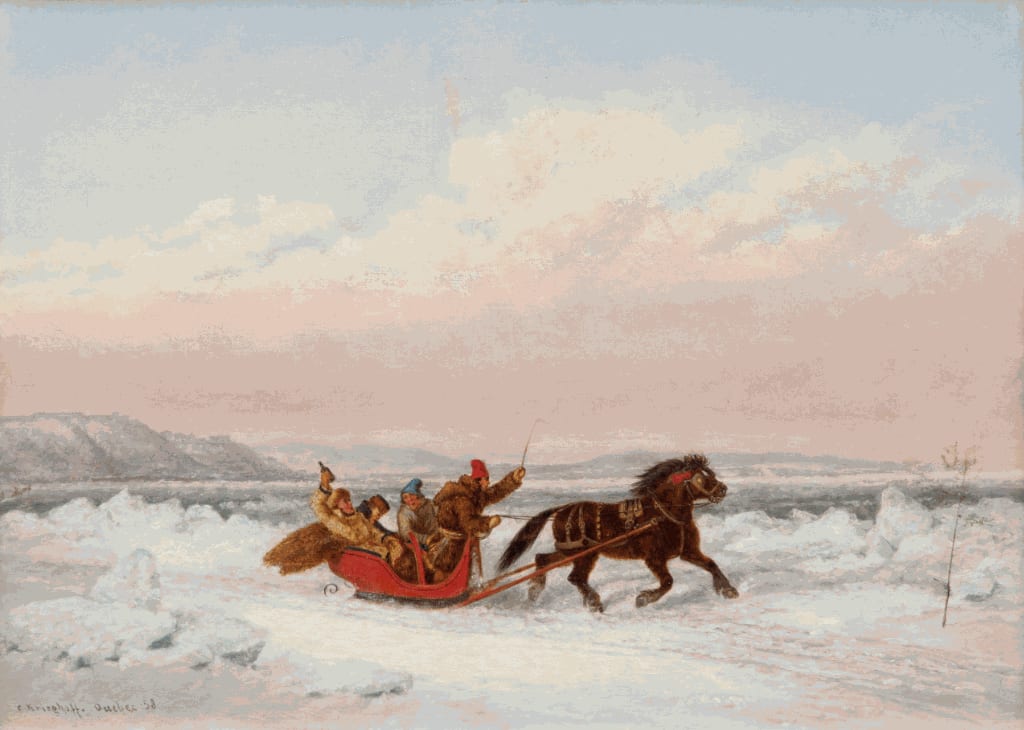
On the St. Lawrence, 1858 by Cornelius Krieghoff
While living in Europe from 1863 to 1870, Krieghoff continued to exhibit his paintings and sell prints and photo reproductions. During this time peroid, his artistic output slowed down. He stayed connected to the Canadian art scene, with ongoing sales and exhibitions of his work. In 1871, he made a brief return to Quebec before relocating to Chicago, where he passed away a few months later in 1872.
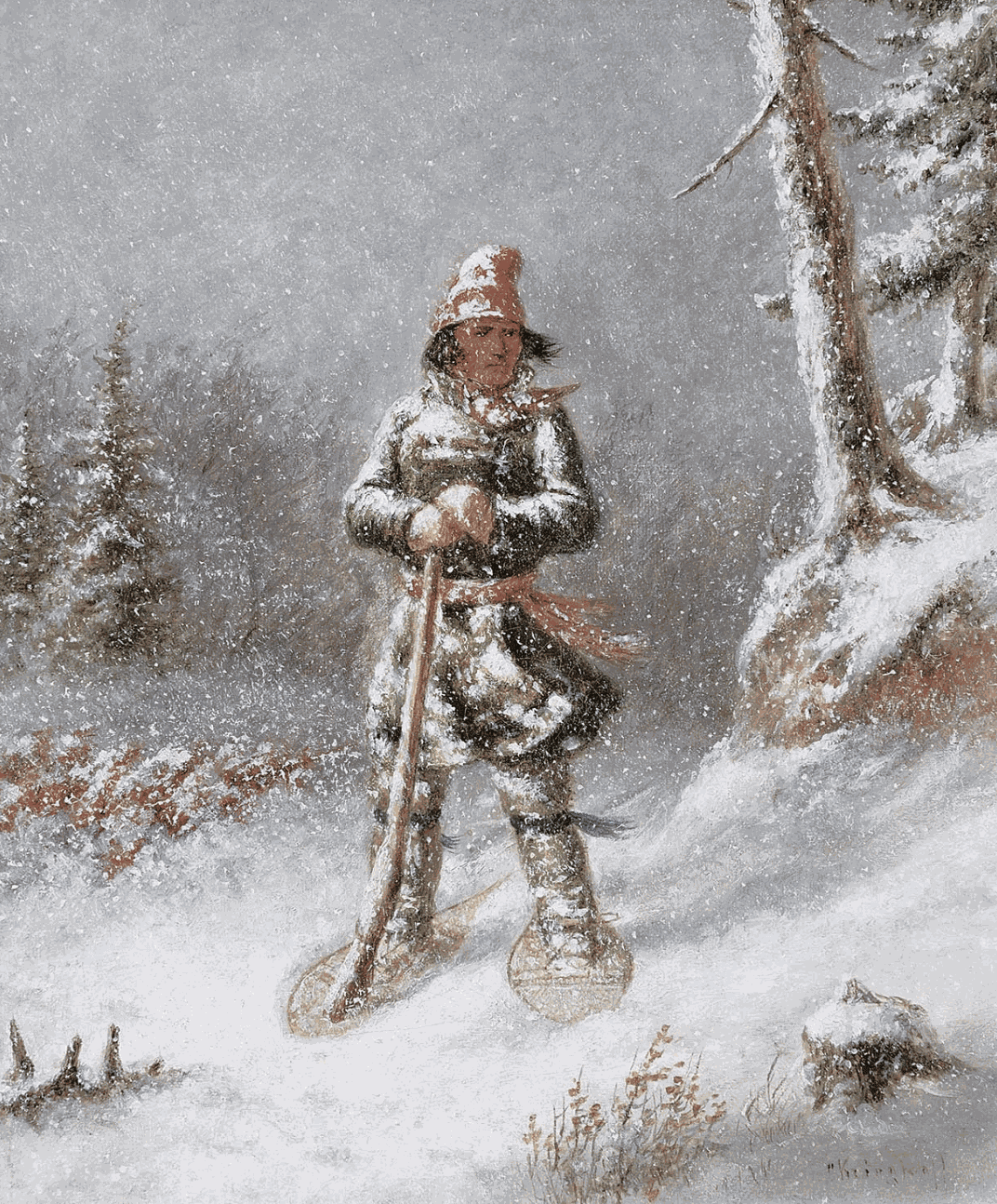
Hunter in a Blizzard by Cornelius Krieghoff
One of the distinctive features of Krieghoff’s art is his ability to capture the harshness and beauty of Canadian winters. Paintings such as The Habitant Farm and Running the Toll Gate have become enduring symbols of the Canadian spirit. Unlike many artists of his time, he avoided mythical subjects, religious scenes, and nudes, as he preffered realistic depictions of life. He was one of the first Canadian artists to consistently paint landscapes.
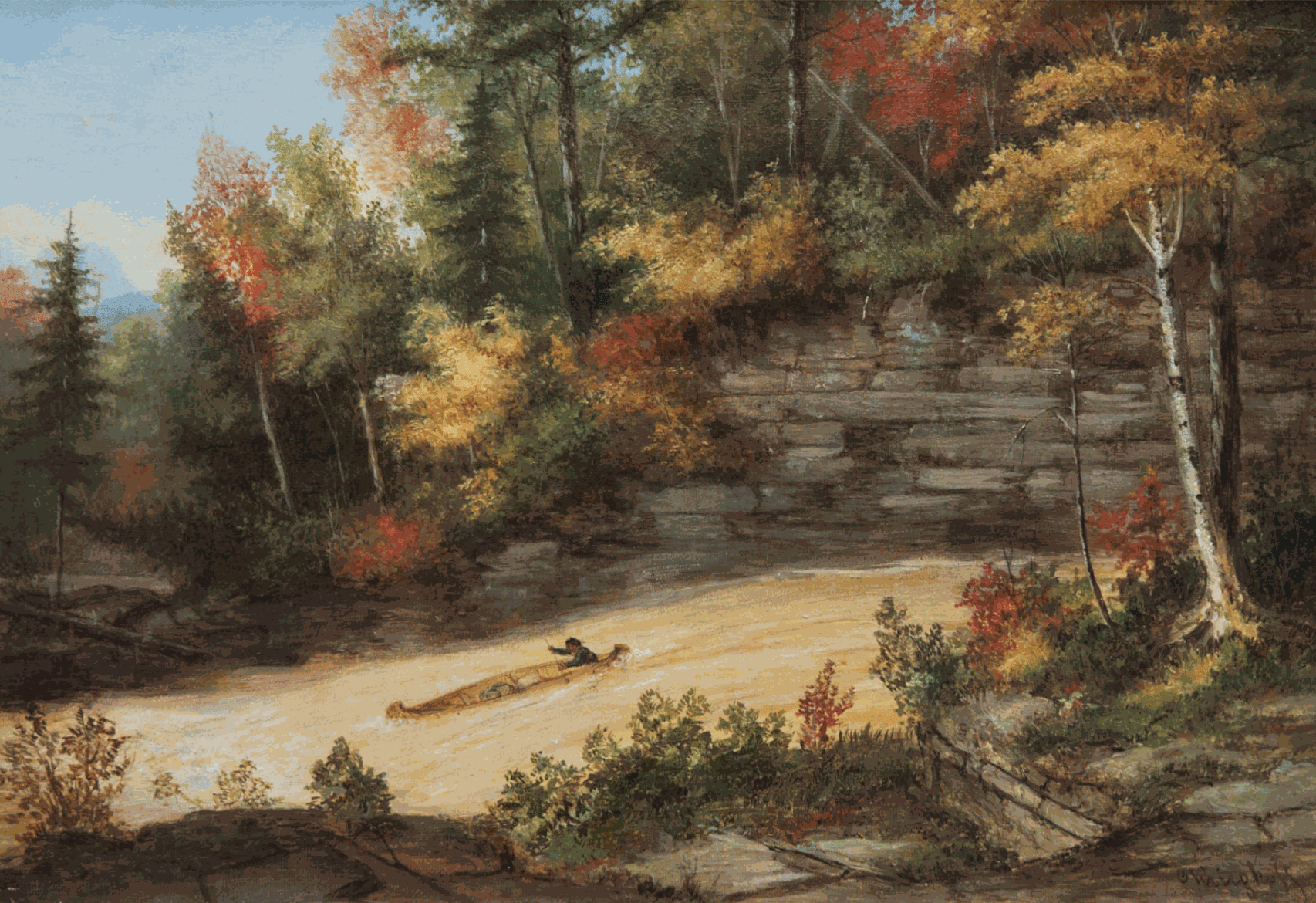
Shooting the Rapids by Cornelius Krieghoff
Though not formally trained in an academic European tradition, Krieghoff developed a style that appealed to both Canadian and international audiences, giving an idealized but also informative view of 19th-century life in North America. He was widely celebrated in his lifetime, especially by English officers buying souvenirs of Canadian life.
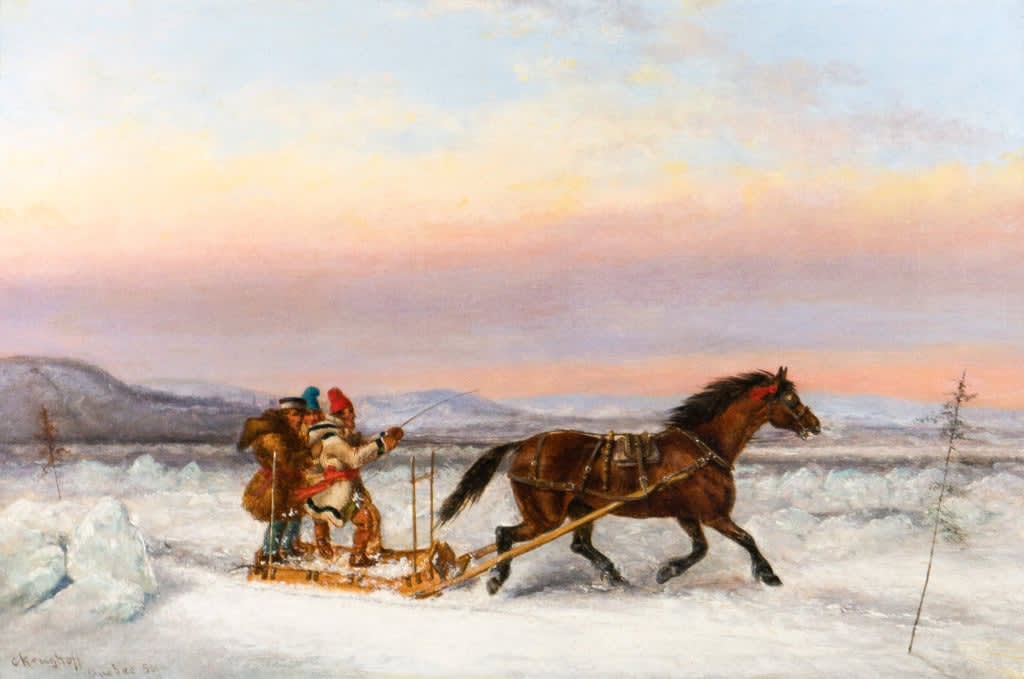
Winter Sleigh Ride, 1859 by Cornelius Krieghoff
Krieghoff is widely regarded as one of the founding figures of Canadian art. He is considered a pioneer of Canadian regionalism, akin to Courbet in France or Millet’s peasant paintings. His works are featured in major collections, including the National Gallery of Canada, the Montreal Museum of Fine Arts, Musée national des beaux-arts du Québec, McCord Museum, and the Art Gallery of Ontario. He remains one of the most well-known pre-Confederation Canadian artists, and his paintings continue to shape how many people imagine early Canadian life.
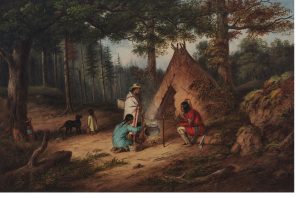
Caughnawaga Indians at Camp by Cornelius Krieghoff
In 1972, Canada Post issued a commemorative stamp featuring his painting The Blacksmith’s Shop, marking the 100th anniversary of his death. His influence can still be seen in the way Canadian art captures regional culture and identity.
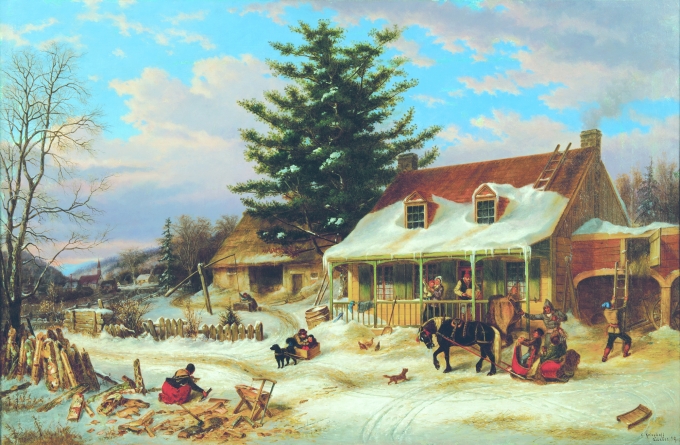
Early Canadian Homestead, Cornelius Krieghoff